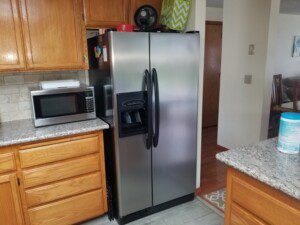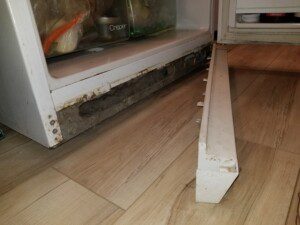
As time went on, and science and technology became better, scientists were able to figure out how to create cool environments using what is referred to as artificial refrigeration. Artificial refrigeration uses refrigerant in a closed system. Heat is removed from the space that is being cooled by compressing the refrigerant, which causes it to boil and evaporate. This process removes heat, which creates a cooler environment. In order to transfer and dissipate the heat, condenser coils are used.
Condenser coils can be found at the back of older refrigerators, and at the bottom of modern refrigerators. Since the efficiency and effectiveness of a refrigerator relies on the transfer of heat at the condenser coils, it is important to keep condenser coils clean. If dirt or debris builds up on condenser coils, the material will slow the transfer of heat, and therefore will impact the functionality of the refrigerator.

Cleaning a refrigerator condenser coil is an easy task, and only requires the use of soft bristled brushes and vacuum cleaners. The hardest part may be to actually move the refrigerator so that you can gain access to the condenser coils, which are usually accessed at the back. Some refrigerator condenser coils can also be accessed at the lower front. Most refrigerator have wheels at the bottom, and can be easily moved, but others may not. If your refrigerator does not have wheels, you should get help moving the refrigerator, since it could be very heavy. Moving the refrigerator could also damage flooring, and if the refrigerator has a water supply for filtered water or an ice maker, you should be careful to move the refrigerator slowly to prevent breaking the water line.
Check out the video below for more information on how to clean a refrigerator condenser coil.
